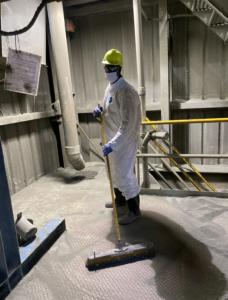 Did you know that there are an estimated 2.8 million workplace injuries reported every year? If you don’t offer OSHA compliant safety training, the numbers are against you. And it’s not just worker safety at stake; without a safety training program in place, you open yourself up to a financial nightmare of legal liability and compliance violations, too. Safety training isn’t just a good thing to offer employees; it should be a mandatory part of all new employee onboarding along with routine refresher classes throughout the year. Here’s a look at why these safety training programs are so important.
Did you know that there are an estimated 2.8 million workplace injuries reported every year? If you don’t offer OSHA compliant safety training, the numbers are against you. And it’s not just worker safety at stake; without a safety training program in place, you open yourself up to a financial nightmare of legal liability and compliance violations, too. Safety training isn’t just a good thing to offer employees; it should be a mandatory part of all new employee onboarding along with routine refresher classes throughout the year. Here’s a look at why these safety training programs are so important.
1. OSHA Requirements Are Not to Be Ignored
The Occupational Safety and Health Act contains more than just recommendations for companies to refer to as necessary. They are a federally enforced set of regulations that every business entity must adhere to, or risk costly fines and violations. OSHA is in every industry, whether you’re manufacturing paper clips or dealing in nuclear waste.
If a workplace injury occurs and employees were not provided safety training, you will be held responsible for the environment and circumstances that caused the injury.
2. Your Employees’ Safety Matters
At the end of the day, your teams want to do a good job and go home. No one can foresee a workplace injury that may cause them months of painful rehabilitation or disability. Employee safety is in your hands, from the moment your workers walk through the door to the moment they punch out at the end of their shift.
3. Worker’s Compensation May Not be Enough
As with any insurance company, workman’s comp is in the business of trying to avoid paying claims. If you can’t document employee safety training and an employee is injured, they may deny the claim, and hold you financially responsible for all medical bills resulting from the injury.
4. Employees Must Know How to Respond to Emergencies
Having a fire extinguisher in every room is useless if your employees don’t know where they are. Likewise, having an emergency preparedness plan is useless unless each employee understands their responsibilities in the face of an incident. Safety training isn’t just about showing employees how to lift with their legs or how to operate machinery properly. An effective training program will cover emergencies and how to handle them. Properly trained employees will make the job of any crews responding to an incident easier, and help to get your business back on track as quickly as possible.
5. Maintain Productivity
Workplace injuries affect your company in many ways, including lost productivity. It’s not just the injured employee who is impacted, but also your organizational operations. Accidents involving machinery, for instance, will likely result in the equipment being shut down for evaluation and assessment so that the cause of the incident can be identified. Negligent handling of hazardous material can create an environmental incident that leaves your entire building in lockdown until a licensed professional can mitigate the damages.
6. Limit Your Liability
Companies without documented safety training programs in place are opening themselves up to a world of litigation and financial liability if an incident occurs. Some of this liability will be lessened if you can prove that employees have attended these training classes. Documentation logs of all training should be kept in each employee file.
Mandatory training should be held any time a new piece of equipment is introduced to employees, no matter how simple its operations may seem.
Elements of a Successful Safety Training Class
These classes should be held annually at a minimum, with mandatory onboarding classes for all new employees and for each new piece of equipment or material that employees will be handling. Topics to be covered should include:
- Fire safety training
- Employee health resources
- Workplace ergonomics
- Safe handling of equipment and materials
- Workplace violence policies and prevention
- Cybersecurity
- Incident and crisis management
- Environmental safety
- Industry-specific safety topics
Make sure each training session is documented, signed by attendees, and stored in a training file as well as every employee’s file.
For environmental safety concerns, reach out to the professionals at ACE Environmental and talk to a professional today.
